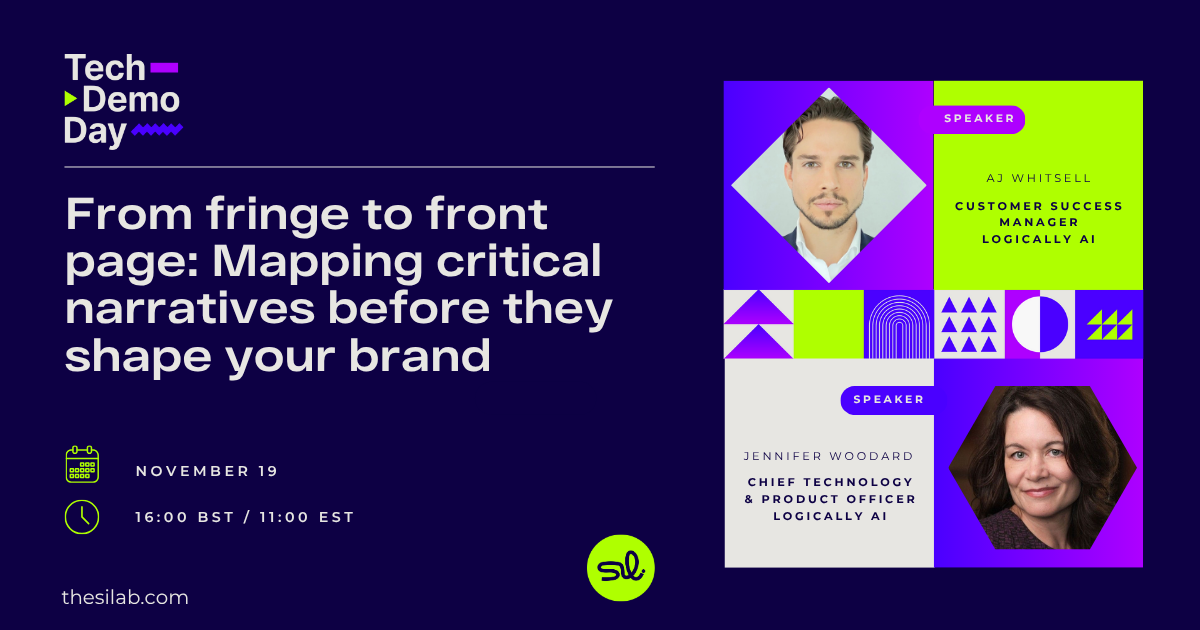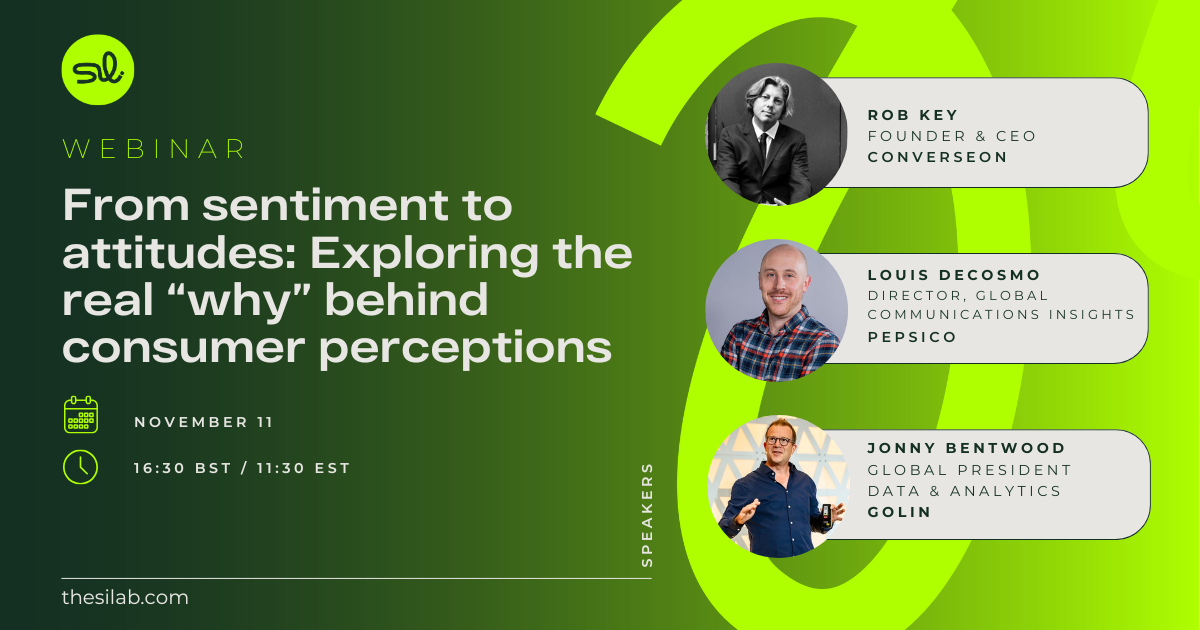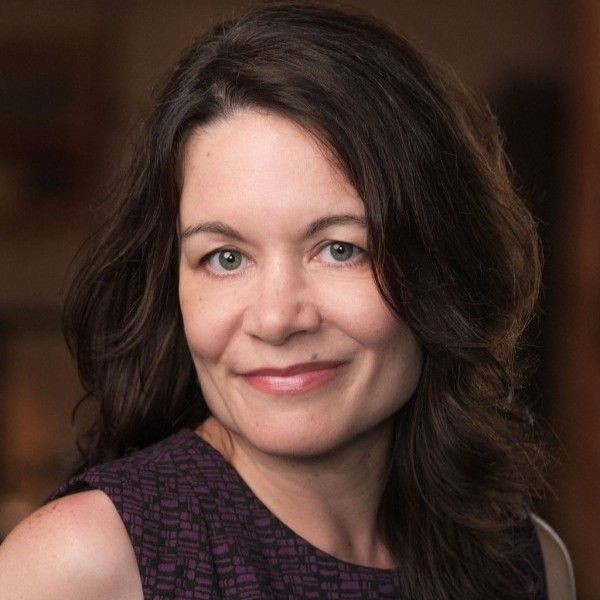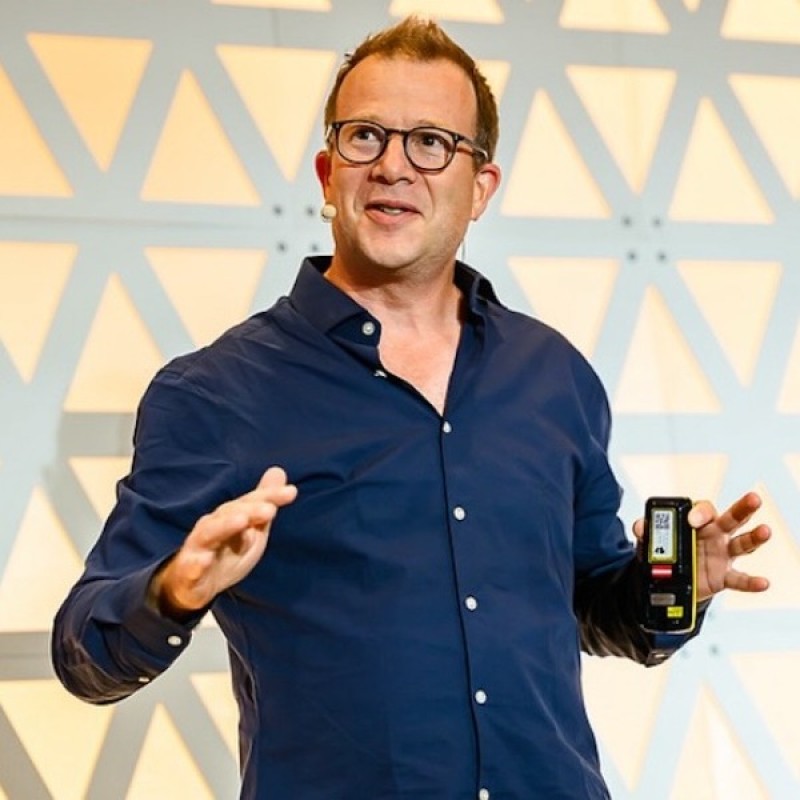.png)
From signals to strategy: How to become a trendspotter with impact
Every brand sees a benefit in trendspotting. But there isn’t just one type of trend. There are those reactive moments with immediate impact and then there are ideas that burn slower and can ultimately change the way society behaves. And while they’re at completely different ends of the spectrum, brands can get value from both. In fact, brands should be trying to get value from both. Knowing how to do that is a different thing, however. This year’s Trends Summit gave us a few clues.
Fast trends for immediate impact
When you hear people talk about trends, they’re usually referring to ‘fast’ trends or fads. These are the ideas that go viral on social media, and before you have time to understand what it’s all about, everyone’s moved onto the next one. Or they might survive slightly longer - a few months or a year - but are reflective of a very specific moment in culture. That’s because people see trends as a way to turn a transactional relationship between brands and consumers into something more meaningful. A shared moment, an inside joke.
And, as we’re seeing, in the age of the internet, culture moves fast. According to Jenny Chang, Founder of the cultural strategy agency Constellation Theory, “[fads] usually have weaker historical significance or they'll be more manufactured like microtrends, which are almost always meant to sell something specific.” This is why they’re so interesting to brands. It’s an opportunity to capitalise on a moment, before people forget about it.
There are plenty of examples of these fast trends, for example annual ins and outs lists, where people share their new years’ resolutions based around what’s in and what’s out for the following year. Or the “influencers confessions” trend, when US-based content creators thought TikTok was going to be banned, so spilled the beans on their trade secrets.
And fast trends can have an immediate impact on brands.
For example, TV shows often trigger viral trends, which gives a boost to viewings. In some cases, it can even resurrect old shows. Judit Major, VP of Social Analytics at Paramount Global, explained how when a comedian lip-synched to a scene from a years-old episode of Broad City, it went viral and opened up the show to a whole new audience. “...what was really important to us is that this trending audio introduced the show to new audiences that maybe were too young in 2016 when Broad City was a huge hit. So what we saw is that there was an increase in full episode starts of Broad City on Paramount Plus, and there was no other marketing effort around it. It was clearly connected to this viral audio.”
Going slow for strategic gain
On the other extreme, ‘slow’ trends are often hard to spot until they’ve happened. It’s a culmination of many subtle cultural moments that build over time until behaviours have changed so much that they become the new norm. As Jenny highlighted, slow trends are those that have strong historical context. “...real trends are visible because they have roots everywhere. So if you look closely, you can see the tide turning years before trends emerge.”
Slow trends include things like the shift towards sustainability, a greater focus on health and wellbeing, and the demand for convenience.
Identifying and tracking the evolution of these types of trends is unlikely to bring immediate financial benefits. However, they are important for brands to be aware of. Eventually the shift will be so great that they can’t be ignored, and brands will need to conform. In recent years, many food brands have reformulated their products to remove artificial ingredients (RIP Kraft Mac & Cheese). This came at a financial cost, but consumer demand was shifting towards natural foods. At a certain point, they were forced to act. Identifying these trends early eases the transition and will offer a competitive edge in the long-term.
Breadcrumbs to the future
It might be easy to think of fast and slow trends as two completely different and unrelated things. However, fads can often be signals of bigger trends.
A perfect example of this is the boom in Korean beauty, which seemed to have appeared out of nowhere in the last couple of years. It’s reached all corners of popular culture, from dermatologist influencers promoting Korean sunscreen, to high-end brands such as Dior and Chanel collaborating with K-pop artists on their beauty lines, as Alex Kolitz and Alejandra Leon from LOXIAS point out.
However, this trend aligns with others which, together, signal a much slower trend. As Jenny points out, “the rise of Korean skincare and the rebranding of matcha and turmeric as health foods, that has all been a shift over the past decade as we move toward more health conscious living and more alternative sources of monitoring your health.”
The fact that people are seeking to be healthier is causing them to turn to cultures known to age well, live longer and eat better than many Western cultures. This is what’s prompting the interest in Asian food and beauty.
Another example of a slow trend is the lack of trust in established systems and a rejection of societal norms. This can be seen across several spaces.
For example, the shift from search engines to social. As Jill Nicholson, CMO at Tubular Labs highlights, “...when people need product recommendations or guides, or they want to learn how to do something, where they would traditionally have gone to search platforms, we're increasingly seeing that people are going to social video.” Younger generations in particular trust their friends and peers more than the tech giants who own the search engines.
And in fashion, there has been a shift away from the quiet luxury trend of 2020 to 2023 as people begin to rebel against the flattened culture that social media algorithms promote. As Marissa Callender, Strategist & Strategic Intelligence at Digitas/ Publicis Media Luxe explains, “Today's sophisticated algorithms have created a cultural vacuum, diluting individuality and curating our taste with efficiency. We have trends like the mob wife aesthetic, cottagecore, tenniscore, normcore, farmcore, every kind of trope out there…But this outcome really has made the landscape completely homogenized, where diversity between personal aesthetics was slowly starting to fade away, and micro trends are burning out faster than ever, leaving true distinction harder to find.”
Cue, the rise of individualism.
How to become a trendspotter
By seeing fast trends as intrinsically connected to slow trends - as one feeding into the other - you can see that the skills required to identify each type are not that different.
But, identifying trends once they’re out in the world can be difficult enough. Predicting them before they happen is even harder. To do this, you need to tap into fast trends to work out which ones are signals of longer-term shifts.
Easy, right?
Of course not. Because these faster trends - or microtrends, as Ben Ellis, the SI Lab’s tools and tech expert, calls them - are often harder to decode than the slow, macrotrends. Because they’re less visible. “Microtrends, they're built different, they're messier, they're more emotional, they're more rooted in actual people’s lived experiences.”
However, Ben has a framework to help you identify when a fad might actually be a signal for a bigger trend, because the most meaningful cultural signals tend to fall into one of six recurring themes. These are:
Identity: Changes in how people define themselves and show it to the world. E.g., Zalphas - the group that sits between Gen Z and Gen Alpha
Consumer behaviour: Changes in how people spend and make choices, and how they cope with situations. E.g., loud budgeting as a way to remove the stigma from a traditionally uncomfortable topic.
Digital language: Shifts in language, including slang or phrasing, or even in meme logic. E.g., delulu as embracing delusion.
Content grammar: Changes in the structure of the content., E.g., now it’s very fast and chaotic. You’ll get people talking about a break-up whilst doing a full face of makeup.
Sentiment flips: When the emotional tone changes. E.g., the rejection of hustle culture for something softer and more forgiving.
Emerging needs: Desires or tensions that haven’t clearly been namd, but are starting to show up through behaviour or tone. E.g., digital sanctuary asthetics - visually soft content that acts like a palate cleaner in the middle of a chaotic ad-filled feed.
Trendspotting isn’t tech-driven
Being able to spot these themes, however, requires understanding behaviour in context. And this is something that a social listening tool will never show you. It will be able to unearth all the content related to a particular topic or hashtag. It will show you the prevalence of this trend. It will show you who is engaging with the trend. And it might even be able to connect it to other trends (if you know where to look).
But it won’t be able to tell you why. And it won’t be able to tell you ‘so what?’
Putting behaviour into context and finding meaning from these behaviours is an innately human skill. Because it takes being human to understand them. As Geoffrey Si, Director of Social Analytics at Revlon explains, “trends come about because people, the hive mind, the culture, something unspoken, unwritten, but ties us all together. That's what's really driving trends. And I think at its core, it's about the human condition.”
So now you’ve got an excuse to spend hours scrolling the feeds. Because spotting and identifying these fast trends and viewing them through one of these shifting signal lenses, is what will get you beyond the scroll and into foresight.
To learn more about fast and slow trends, and how to spot them, check out Trends Summit on demand.
This interview was recorded via LinkedIn Live, if you prefer to view on LinkedIn, click the button below.
View InterviewSee related content
.png)








